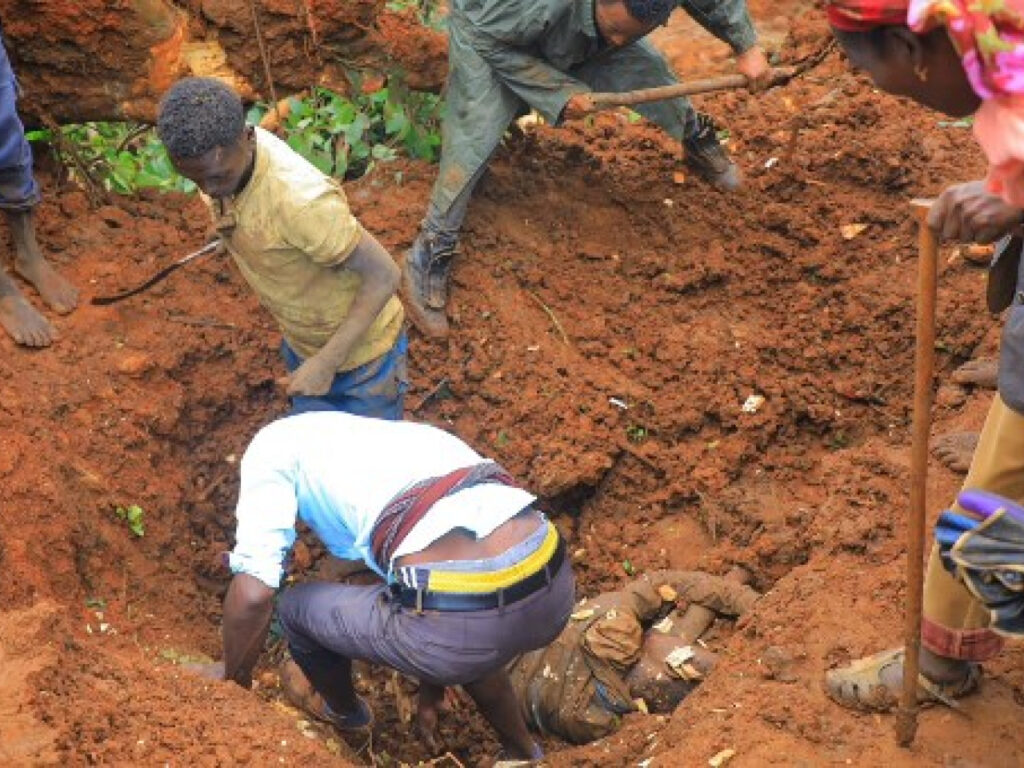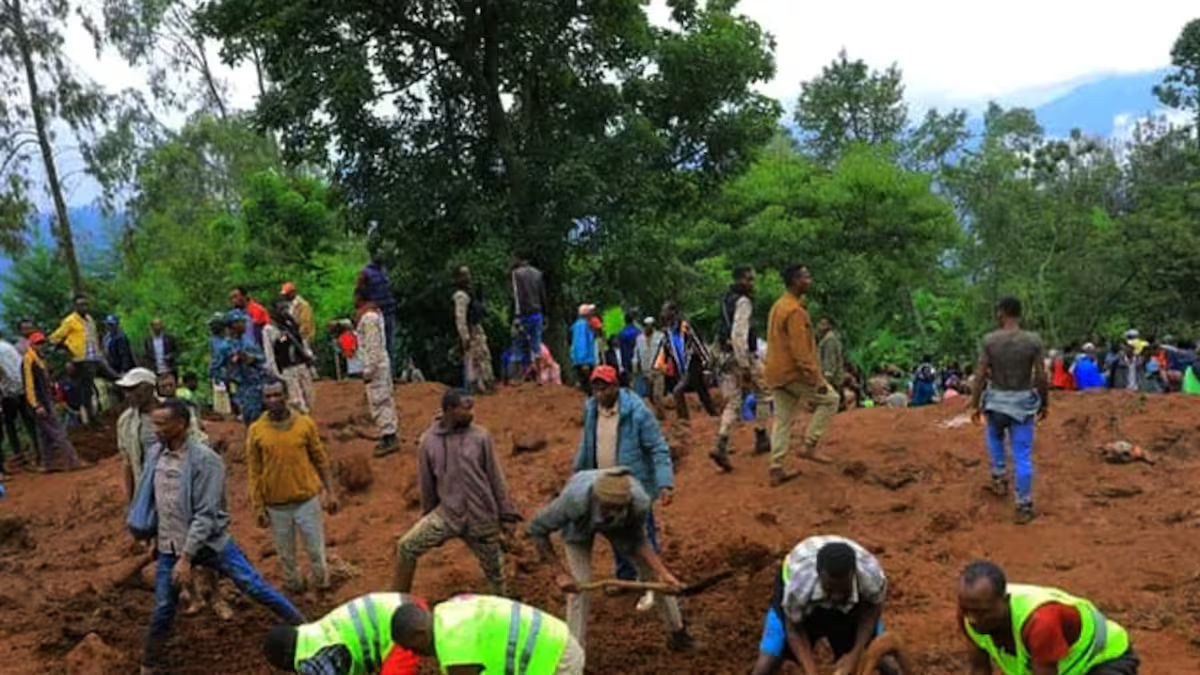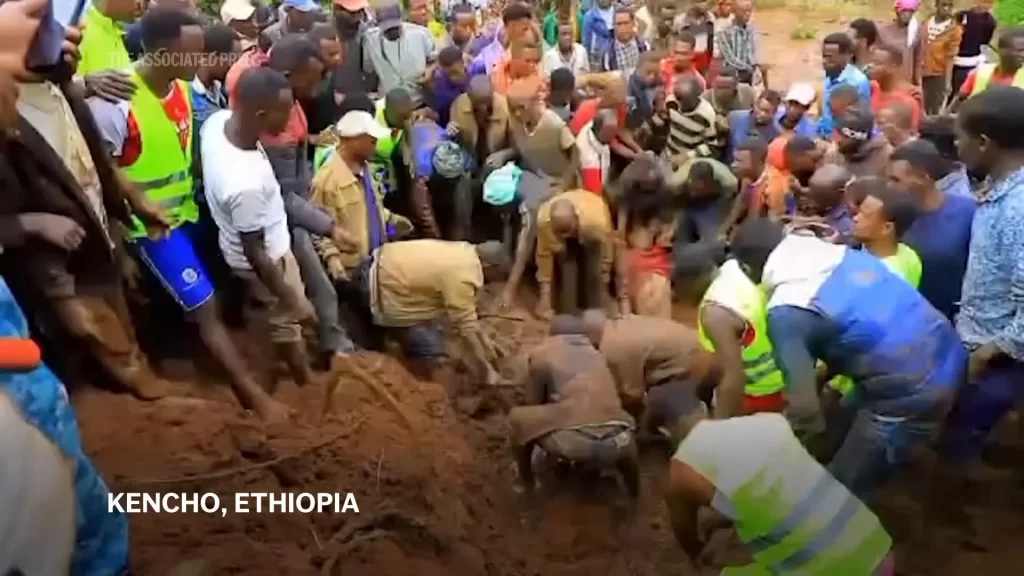The search for survivors continues in Kencho Shacha Gozdi district, southern Ethiopia following a catastrophic mudslide that has claimed at least 229 lives. The death toll, which has risen dramatically from an initial count of 55, includes many who were attempting to rescue survivors, according to local authorities.

Dagmawi Ayele, a local administrator, reported that young children and pregnant women were among the victims. At least five people have been rescued alive, offering a glimmer of hope amidst the tragedy. The exact number of missing individuals remains unknown, complicating rescue efforts.
Ethiopia Prime Minister Abiy Ahmed expressed his condolences on Facebook and announced the activation of the federal disaster prevention task force to assist in search and rescue operations. The disaster, triggered by heavy rain, has devastated the remote district, challenging rescue teams working in rugged terrain.

On Monday, as victims were being laid to rest, rescue teams continued to comb the area for survivors. Markos Melese, director of the disaster response agency in Gofa Zone, reported that many rescuers are still unaccounted for, adding to the growing toll of this tragedy.
The ongoing rescue efforts are marked by emotional scenes, with women crying out as they watch rescuers using shovels to clear through thick mud. The challenging conditions have hampered rescue operations, but authorities remain committed to the search.

Landslides are a common occurrence during Ethiopia’s rainy season, which began in July and is expected to continue until mid-September. This disaster underscores the vulnerability of certain regions to such natural calamities and the need for improved disaster preparedness and response mechanisms.
As the community grapples with this immense loss, the focus remains on supporting survivors, continuing search efforts, and preventing further casualties in the affected areas. The tragedy has drawn national attention to the plight of remote communities and the urgent need for enhanced infrastructure and emergency response capabilities in vulnerable regions.



